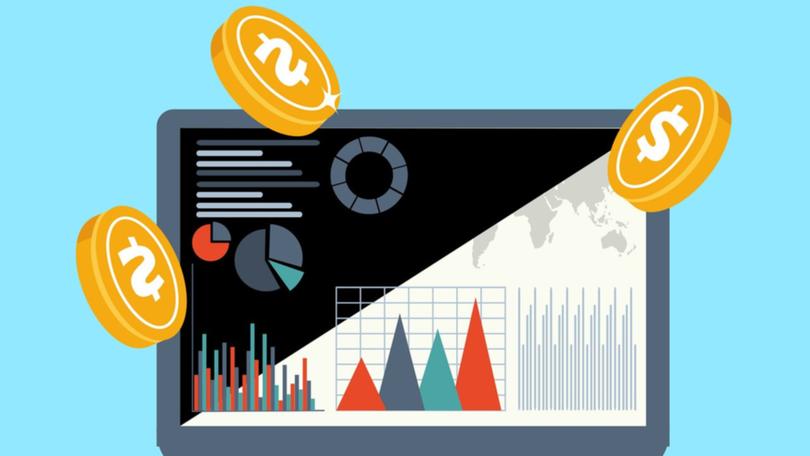It’s hip to be square as ‘boring’ commodities iron ore and gold reign supreme for the half year

Investors who resisted the temptation to expose themselves to the miners in vogue this time last year have been richly rewarded.
A key theme has emerged as the dust settles from a clustered rush of miners to table their results for the six months ended December 31.
Iron ore and gold — the two mainstays of the WA industry — kept the cash raining down on shareholders, while those mining future-facing minerals and metals have been thrashing to keep their heads above water.
Sign up to The Nightly's newsletters.
Get the first look at the digital newspaper, curated daily stories and breaking headlines delivered to your inbox.
By continuing you agree to our Terms and Privacy Policy.The State’s two iron ore goliaths gave us the first insight into this trend.
Rio Tinto said 2023 exemplified the health of its business, despite all its key commodities — copper, aluminium, diamonds and titanium — delivering weaker earnings than the year prior.
All except for iron ore. Persistently high prices for the steelmaking input defied analyst expectations and offset its pain elsewhere to drive profit past $US10 billion for 2023.
BHP took the disparity to the extreme thanks to an ongoing nickel market bloodbath annihilating the entire value of its WA Nickel portfolio to the tune of $5.4b.
The Big Australian was also stung by dampened copper prices, which is a growing portion of its earnings basket after acquiring OZ Minerals for $9.6b last year.
It still wasn’t enough to fully offset the bundles of cash spitting out from its mammoth Pilbara iron ore hub and enable the world’s biggest miner to declare a decent interim dividend of $US72c a share.
Chris Ellison’s Mineral Resources’ solid iron ore base countered the price pinch that beset its expanding lithium business.
Spot prices for its lithium product – spodumene concentrate - were down nearly 90 per cent year-on-year by the end of last month.
Dwindling lithium prices and net debt of $3.5b has some analysts worried about the stress on MinRes’ balance sheet, as the construction of its $3b Onslow iron ore project reaches the pivotal final stretch.
But for any doubters of MinRes’ future, “the boss says “F—k you”.
The dramatic nosedive of the lithium market was highlighted by Pilbara Minerals’ profit for the half-year imploding 82 per cent from $1.24b to $242m.
Yet, to put things in perspective, this was a better result than many investors in the Dale Henderson-led miner had hoped for come the tail end of last year.
IGO is shakily carrying both commodities that had the most violent fall from grace — lithium and nickel — but its top brass might be secretly thanking the Indonesians for gutting the price of the latter.
Its $1.3b takeover of nickel miner Western Areas was battering shareholders even when the market for the lustrous metal was flying high by the beginning of 2023.
The disastrous purchase may get lost in the rubble of the collapsing Australian nickel industry, but that will be little consolation for bruised investors.
The Murrin Murrin mine in the Goldfields run by Swiss giant Glencore increasingly looks like it will be the sole nickel survivor.
Glencore’s boss says despite the price tailspin the operation is still profitable — albeit barely — but that wasn’t enough to prevent shareholders from hitting the sell button after the company’s dividend was slashed.
Those holding a slice of Northern Star Resources will be on the other end of the pay-out spectrum. Australia’s largest gold miner delivered record cash earnings of $702m for the half and a record interim dividend of 15¢ per share.
“This interim result is a glimpse of the cash-generating potential that our business is positioned for on a sustainable basis as we reach the halfway mark of our low-risk, five-year profitable growth strategy,” Northern Star boss Stuart Tonkin said.
The gold price hit a historical peak in December thanks to wars in Europe and the Middle East fuelling a volatile global macroeconomic environment already beset by unprecedented inflation.
Among the plethora of ASX-listed goldies to also reap the rewards of the elevated price for the precious metal were Ramelius Resources, Perseus Mining and Red 5.
The second-largest Australian-based gold miner — Evolution Mining — was one of the few not to shine.
Evolution’s profit edged lower, largely due to its Northparkes purchase in NSW and unforeseen downpours over east curtailing production during the final quarter of 2023.
Gold mines remain the most abundant operational mining projects in Australia, while it is set to be a sour half for one of the rarest.
Lynas Rare Earths dominates the production of rare earth elements outside of China and is currently the only major player in Australia via its Mt Weld mine near Laverton and associated Kalgoorlie processing facility.
But Lynas’ position as an industry titan will not shield it from posting lower half-year earnings on Monday due to prices for its bundle of rare earth elements — used in smartphones, electric vehicles, MRI machines and military equipment — declining as China ramps up production.
As results season nears the end, time will tell if 2024 blesses the boring again.
Originally published as It’s hip to be square as ‘boring’ commodities iron ore and gold reign supreme for the half year
